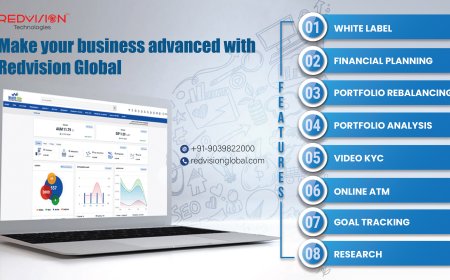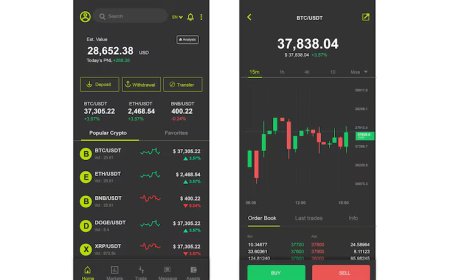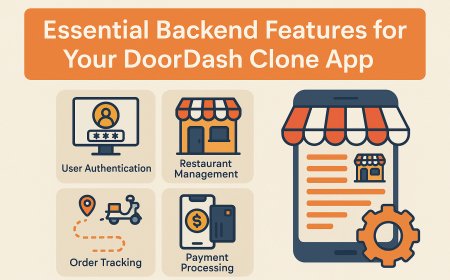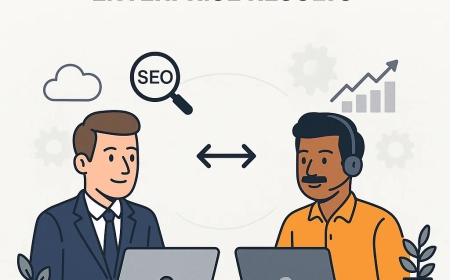Advanced Retargeting Strategies for eCommerce
As eCommerce continues to explode in popularity, competition has intensified. While attracting visitors to your online store is essential, the real game-changer lies in how effectively you can bring them back after they leave. This is whereadvanced retargeting strategiescome into play. These tactics not only help recover lost sales but also build deeper connections with potential customers. In this comprehensive guide, well explore actionable and innovative retargeting methods tailored for eCommerce businesses looking to thrive in todays digital landscape.
The Power of Retargeting in eCommerce
Studies show that over 97% of visitors leave an eCommerce website without making a purchase. Retargeting allows businesses to re-engage these users by showing personalized ads across different platforms like Google, Facebook, Instagram, and more. This second chance often leads to increased conversion rates, lower cost per acquisition (CPA), and a better return on ad spend (ROAS).
Traditional retargeting methods, like simple display ads for abandoned products, still work. But to compete in 2025, brands must embraceadvanced retargeting strategiesthat go beyond the basics.
1. Segment-Based Retargeting
One-size-fits-all ads are a thing of the past. Modern retargeting must be customized to user behavior. Segmenting your audience allows you to deliver highly relevant ads based on actions such as:
-
Time spent on site
-
Number of pages viewed
-
Cart abandonment
-
Past purchases
-
Product categories browsed
By segmenting your audience, you can serve ads that speak directly to their intent. For example, users who viewed luxury items but didnt purchase might respond better to time-sensitive offers than users who only browsed low-cost products.
2. Dynamic Product Retargeting with AI
Dynamic retargeting allows you to show personalized ads featuring the exact products (or similar ones) a visitor viewed. But now, artificial intelligence has elevated this to the next level.
AI-powered platforms use behavioral data, contextual signals, and predictive analytics to recommend products a customer is most likely to buyeven if they didnt view them originally. This helps move customers further down the funnel while increasing cross-sell and upsell opportunities.
Some platforms offering AI-driven dynamic ads include Google Performance Max, Meta Advantage+, and Criteo.
3. Cross-Channel Synchronization
Todays consumer journey spans multiple devices and platforms. To maximize impact, your retargeting strategy must be synchronized across:
-
Facebook & Instagram Ads
-
Google Display Network
-
YouTube
-
Email
-
SMS
-
Push Notifications
When messaging and offers are consistent across channels, it improves brand recall and boosts the chances of conversions. For example, a customer who abandoned a cart might first receive an email, then see a Facebook ad, and later encounter a Google Display adall reinforcing the same product and offer.
Cross-channel automation tools like Klaviyo, Omnisend, and AdRoll can help you streamline and scale this approach.
4. Sequential Retargeting Funnels
Instead of showing the same ad repeatedly, sequential retargeting lets you guide users through a planned narrative over time.
Example Sequence:
-
Day 1: Product reminder with benefits
-
Day 3: Customer testimonial or review
-
Day 5: Limited-time discount
-
Day 7: Scarcity message (low stock)
This drip-style storytelling creates urgency and builds trust gradually. Its a powerful psychological nudge that mimics how salespeople would follow up in a brick-and-mortar scenario.
5. Contextual & Time-Based Retargeting
Modern tools allow advertisers to go beyond static retargeting and considerwhenandwherean ad appears.
Contextual Factors:
-
Time of day (e.g., show high-ticket items in the evening)
-
Weather (e.g., promote raincoats in rainy areas)
-
Device (e.g., show mobile-optimized offers for mobile users)
-
Location (e.g., geo-targeted promotions)
Tools like Google Ads custom audiences or Meta's contextual placement controls allow for this precision. Tailoring your message contextually can significantly boost engagement and conversion rates.
6. Exclusion-Based Retargeting
Not every visitor should be retargeted. Showing ads to users who have already purchased or bounced quickly can waste budget and annoy customers.
Advanced strategies include setting up:
-
Purchase exclusions
-
Frequency caps
-
Duration windows (e.g., 7-day vs 30-day retargeting)
-
Engagement filters (e.g., retarget only those who visited >2 pages)
This improves ROI and helps you focus on high-intent users.
7. Lookalike Audiences from Retargeting Data
Once youve gathered enough data from successful retargeting campaigns, you can use that audience to buildlookalike audiences.
Platforms like Facebook and Google allow you to find new users who behave similarly to those who converted. This helps you scale campaigns while maintaining high efficiency.
A pro tip is to segment your retargeting lookalikes into:
-
High spenders
-
Frequent buyers
-
Category-specific customers
Each can be used to fuel more personalized prospecting campaigns.
8. Retargeting with First-Party Data & CDPs
With the decline of third-party cookies, the future of retargeting lies infirst-party datainformation collected directly from users via opt-ins, logins, or purchases.
ACustomer Data Platform (CDP)like Segment or Bloomreach can unify your first-party data and sync it with ad platforms. This allows for ultra-targeted campaigns, even in a privacy-first world.
Collecting emails and phone numbers through gated content, quizzes, or loyalty programs can provide the ammunition you need for powerful email, SMS, and custom audience retargeting.
9. Behavioral Email Retargeting
Email remains one of the highest-converting retargeting channels. By tracking behavior, you can send:
-
Cart abandonment emails
-
Browse abandonment emails
-
Price drop or back-in-stock alerts
-
Post-purchase cross-sell offers
Using tools like Klaviyo or Mailchimp, you can automate these campaigns based on specific triggers and personalize them using dynamic content blocks.
10. Creative Optimization for Retargeting Ads
Retargeting ads can get ignored if theyre not visually appealing or emotionally resonant. Use A/B testing to refine your:
-
Headlines (emphasize urgency or benefits)
-
Images (try lifestyle vs product-focused)
-
Call-to-Actions (e.g., "Claim Offer" vs "Buy Now")
-
Offer types (free shipping, discount codes, bundle deals)
Platforms like Meta Ads Manager or Google Ads Experiments make it easy to test and optimize creatives regularly.
Final Thoughts
Implementing theseadvanced retargeting strategiescan dramatically improve your eCommerce business's ability to recapture lost traffic and convert it into loyal customers. From AI-powered dynamic ads to privacy-compliant first-party data strategies, the possibilities are more powerfuland complexthan ever before.
Retargeting is no longer just about showing the same ad to everyone. Its about intelligent segmentation, contextual relevance, and emotional storytelling.
If you're keen to master these techniques hands-on, enrolling in aDigital Marketing Course Chandigarhcan provide practical experience and exposure to the latest tools and strategies used by top-performing brands.







































